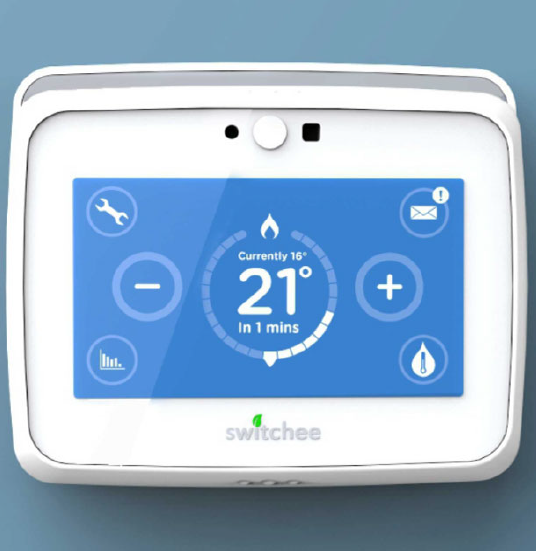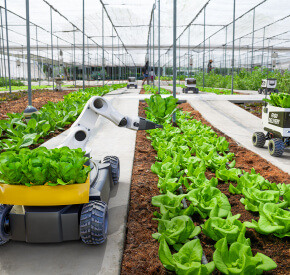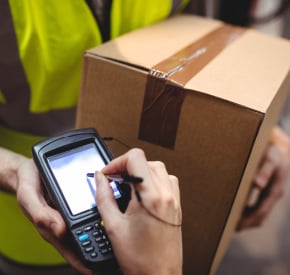
IoT connectivity for smart metering
Improve energy efficiency with accurate monitoring and measurement.
What is smart metering?
Smart metering enables the consumption of energy, water and natural gases to be accurately recorded and shared digitally with energy suppliers. For home owners and facilities managers it means greater control of energy usage and costs. For energy firms it enables them to provide an accurate bill and the ability to optimise energy distribution when and where it is needed.

The growth of smart metering
Smart meters are changing how consumers and organisations use energy for the better. The green agenda has improved awareness and made consumers more conscientious of unnecessary wastage and overuse of high energy appliances. Smart metering allows consumers to make sensible decisions to reduce consumption and play a role in saving the planet.
Energy companies need to address the dynamic demand for power. By investing in smart meters they are enhancing grid resiliency, reducing the risk of energy blackouts and grid failures. The data they receive from smart meters allows them to:
- Monitor, analyse, and control energy production
- Identify usage patterns
- Detected and resolve anomalies faster
- Pin point the origin of an issue
- Redistribute energy loads to prevent
- Automate energy infrastructure to use resources more efficiently.

The role of cellular connectivity in smart metering?
Global network coverage
For global IoT deployments, cellular connectivity is widely considered the most logical and reliable connection option. There is no need to build new infrastructure nor add additional network gateways to support remote deployments. Connectivity is via the cell towers that are already in place. This already tried and tested infrastructure, also provides the added benefit of cellular roaming. For solutions that may either be deployed to an unknown spot in the world or move frequently between regions, a cellular provider with multiple mobile network operators (MNOs) would be a sensible option.
eSIM
Deploying cellular connected devices around the world can be complex particularly with large scale projects that need to connect in different countries. eSIM can help. eSIM or eUICC refers to the over the air re-programmability of IoT SIMs enabling them to connect wherever they are in the world. It brings significant commercial and technical advantages for large scale deployments and applications that need a future proof connectivity solution. eSIM provides an insurance policy. It avoids single vendor lock-in, counteracts permanent roaming restrictions and allows for profile switching for commercial, technical or locational reasons. Without the need to physically swap out SIMs which can be an expensive process. eSIM can simplify the whole supply chain for IoT applications. Beginning with manufacturing, using a single SIM component for all devices and the option to embed the SIM or chip into the device on the production line and provision it later.
Low Power Wide Area Network
As the title implies, Low Power Wide Area Network (LPWAN) technologies use very low power to provide long-range cellular connectivity. LPWAN technologies use a small portion of the mature and reliable LTE bandwidth to provide connectivity that’s ideally suited to devices that rely on battery technology to function.
Historically, a significant limitation for cellular adoption has been power consumption and battery life (or lack of!). LPWAN protocols like LTE-M and NB-IoT make it possible for cellular IoT modules to not only save power when not in use, but to also transmit relatively small amounts of data with minimal power usage.
Both LTE-M and NB-IoT are designed to offer years of operation from a battery-driven power source. Since data throughput is limited (but often more than enough for relaying sensor data), simpler signal modulation schemes and less complex radio modems are needed, leading to diminished power requirements. Advances in wake/sleep modes on modern hardware only contribute to these benefits.
Security
Cyber security risks are a reality. It is essential to keep the gateway secure and create private connections to the Cloud. On-SIM technology and mobile core network services, resolves IoT device identity issues, enables dynamic scalability and provides defence against spoofing of IoT devices, ransomware events and unauthorised device access to network and Cloud services.
Since cellular networks use SIM cards for authentication, it’s exceedingly difficult to spoof the identity of a device. SIMs can be pre-provisioned to securely communicate with Cloud Services. Compare this to Wi-Fi: When connected to a public Wi-Fi network, devices are sharing the connection with all other devices on the network. If any individual device has a security concern, all devices are at-risk. Cellular keeps every device separate from every other device, ensuring the security of the data being transmitted.

Smart solutions for affordable housing
Switchee designs smart thermostats to combat fuel poverty in affordable housing, lowering energy costs by learning occupancy patterns.
However, many residents lacked Wi-Fi, limiting connectivity and landlords’ ability to monitor heating systems. Switchee addressed this by implementing alternative connectivity solutions, enabling landlords to manage assets efficiently while helping residents save on energy costs.
IoT connectivity solutions for any sector

Our IoT solutions enable precision farming, optimise resources and improve yields through data-driven decisions for smart, sustainable operations.

Our IoT solutions offer remote control, real-time monitoring and automation of wearables, home appliances and digital assets for enhanced convenience and security.

Our IoT solutions enable predictive maintenance, optimise distribution and support smart grids, enhancing reliability and sustainability whilst reducing costs.

Our IoT solutions offer critical data for environmental protection, regulatory compliance and sustainable resource management, fostering a healthier ecosystem.

Our IoT solutions enable real-time patient data, predictive maintenance of smart devices and better treatment outcomes for personalised healthcare.

Our IoT solutions improve efficiency, reduce downtime and enhance quality control, transforming operations into smart manufacturing processes.

Our IoT solutions optimise supply chains, reduce costs and improve delivery accuracy for better reliability and customer satisfaction.

Improve service delivery and operational efficiency with smart infrastructure, real-time data and automation for a safer, sustainable community.

Our IoT solutions optimise stock management, support sales strategies and provide a seamless, personalised shopping experiences.

Our IoT solutions offer comprehensive coverage, improve incident response and enable proactive threat detection, protecting people and assets.

Our IoT solutions optimise energy use, enhance occupant experience and reduce costs for sustainable, intelligent building environments.

Our IoT solutions enable local authorities to improve urban living, through real-time analytics, connected infrastructure and automated services.

Our IoT solutions reduce downtime, improve delivery services and boost customer satisfaction driving innovation and sustainability in transportation.

